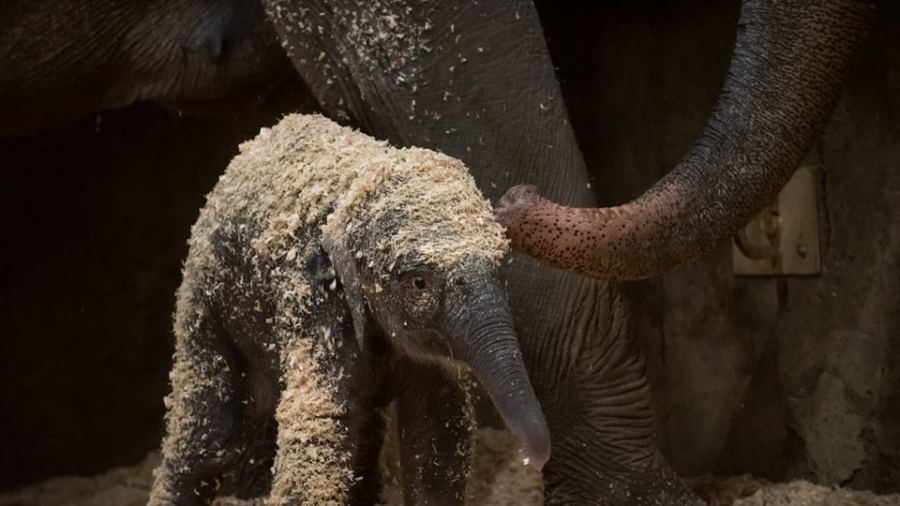A baby elephant was welcomed at the Columbus Zoo in Ohio early on Dec. 6.
Mother Phoebe, an Asian elephant, gave birth to the calf at around 3 a.m.
The newborn’s sex has yet to be determined as zoo staff is letting the mother and baby have time alone to bond.
“Both are doing great and the calf appears strong! Our animal care team says Phoebe is an experienced mom,” the zoo said in a statement.
Phoebe and a male elephant were paired based on a zoo survival plan. Attempts to breed with him were unsuccessful so she was artificially inseminated with sperm from the male, Hank, and a male from another zoo.
A DNA test will determine which one is the father.
“While still a relatively rare procedure for elephants, attempts to artificially inseminate elephants are becoming more frequent in an effort to bolster the numbers of endangered elephants, whose populations are rapidly declining in their native range,” the zoo noted.
The baby hasn’t been named and the public will have the opportunity to help choose the name, the zoo said. It will announce more details regarding the name later.
Elephants in the zoo were featured in National Geographic Wild TV miniseries “Secrets of the Zoo.”


Asian Elephants
Asian elephants give birth to babies weighing approximately 250 pounds after an 18- to 22-month gestation period, according to the zoo’s website. At peak size, elephants can weigh up to 16,000 pounds and 10 feet from front to back.
Females live an average of nearly 47 years while there is insufficient data for how long males typically live.
At the zoo, the elephants eat hay, produce, and edible plants; in the wild, they enjoy grass, leaves, branches, fruit, and vegetables.
“Elephants have inefficient digestive systems, utilizing less than 50 percent of the food they eat; therefore they need to consume hundreds of pounds of food daily to support their bulk. They will eat for up to 16 hours a day to meet this demand,” the zoo stated.
“Water consumption can vary from 25 to 50 gallons daily. The inefficient digestive system produces massive amounts of manure, which in the wild serves as a transport mechanism for seeds, and a source of food for insects and birds.”
Elephants use their trunk for many tasks, including breathing, eating, and social interaction. The trunk is a combination of the nose and upper lip; it’s complex muscular structure, which includes thousands of muscles and no bones, provides strength and dexterity. The end had a small “finger” that helps elephants pick up small objects.


